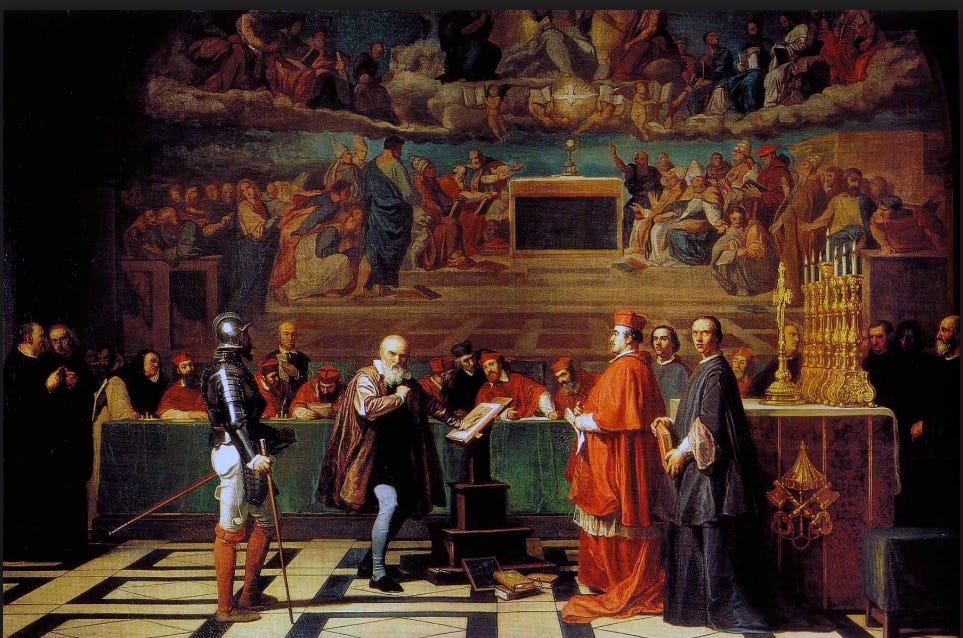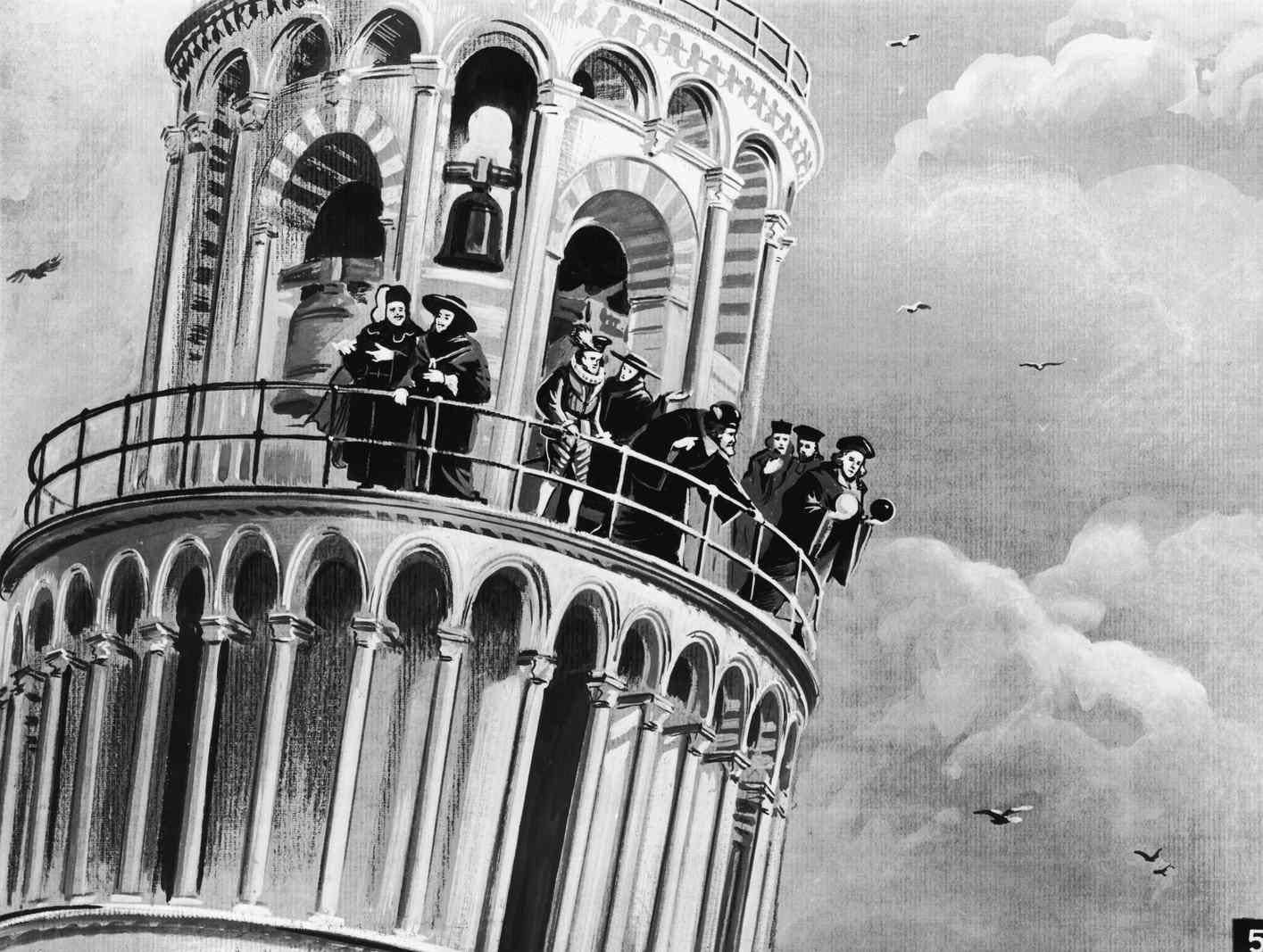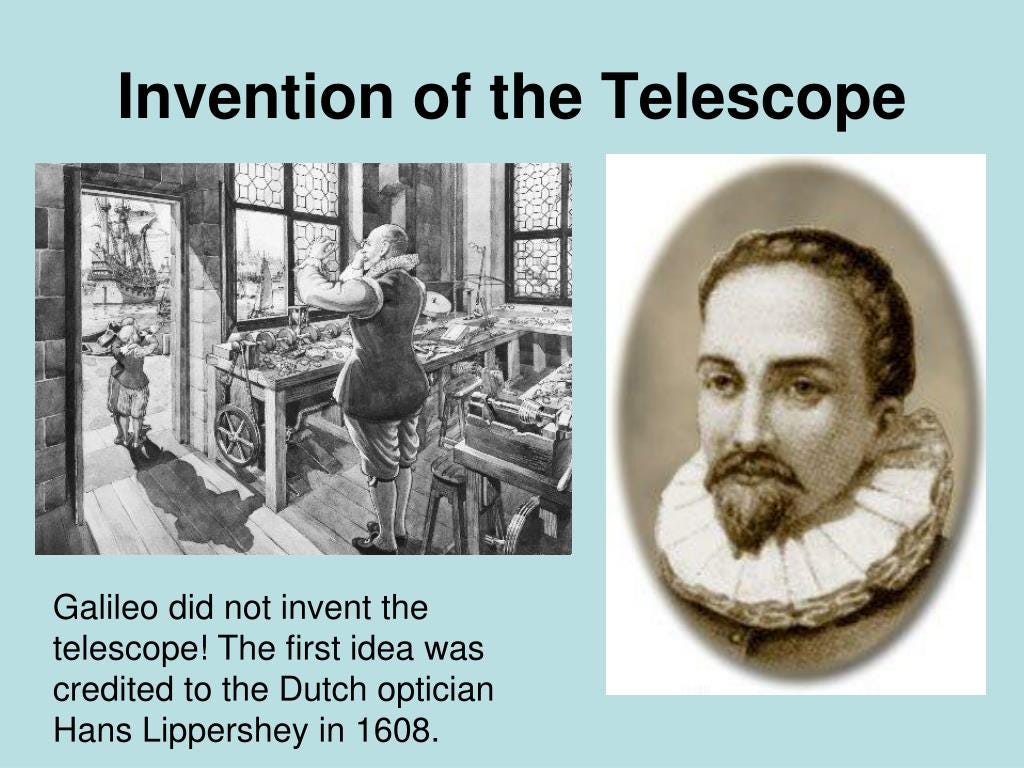Wednesday, February 21, 2024
Scientism and the Galileo myth. Another example of 'The Science' and its mendacity and propaganda.
The Religion of The Science, or Scientism, does not suffer competitors or doubts.
by StFerdIII

(Galileo (1564-1642), facing the inquistion)
The Scream
We have all heard the story of Galileo from the early 17th century. The honest, independent, objective, ‘scientist’, trying to drag the superstitious post-medieval world into light and knowledge. Attacked, tortured, and demonised by the Catholic inquisition for ‘proving’ that the Sun was the centre of our solar system and the true object of worship. His truths ignored due to Biblical ignorance and rank stupidity. Lesser mortals, debased by religion, unable to comprehend his proofs and genius, refused to enter the door of science he was opening, closing it. The hairshirt wearing, idol-worshipping, cowering and despairing Church with its unclean, unkept, illiterate monks had declared war on ‘The Science’. We all know this to be true. Teacher say, TV say, books say, ‘The Science’ say. Twas the Dark Ages before the ‘Enlightenment’.
But the truth is that Galileo was never accosted, tortured, beaten or even demonised for his views. In fact, he lived a long, salubrious life, entirely funded by the de Medici’s and the Church.
The Myths
According to our modern education hagiography, the following is ‘true’ about Galilei Galileo:
1. Proved heliocentricity (it took some 200 hundred years after Galileo, before some proofs were offered, namely stellar parallax and light aberration which can also be explained by the Tychonic model, as covered in other posts)
2. Invented the telescope
3. Discovered Sunspots
4. Identified comets
5. Dropped weights from the leaning tower of Pisa proving the ‘law’ of accelerated gravity
6. Invented the incline plane to prove that an object falling down an incline will roll up an incline for the same distance as the declination
7. Discovered the important properties of a pendulum
8. Based on the pendulum discovered time keeping
9. Was the first to push ‘experimental science’
Busy guy. Except that none of the above is true (Kuhn, p. 10). Galileo did not invent the telescope and his customised production was largely inferior to that of Kepler’s. He did not prove heliocentricity whatsoever (more below). It is unlikely he performed the weight dropping experiment, nor did he discover the attributes of a swinging pendulum, the incline motion of an object proceeding from a declination; nor did he uncover secrets leading to time keeping or navigation.
Christopher Scheiner discovered Sunspots. Jesuits long before Galileo had traced and explained the life cycle of comets, contrary to Galileo’s claim that they were ephemeral. Scientific experimentation using defined methods dates to at least the 12th century. Galileo was the same character who yelled and pounded his desk that the moon had an atmosphere. It doesn’t and if you landed on it, you wouldn’t survive more than 10 minutes due to radiation exposure.
Regarding the fictitious Tower of Pisa-weight dropping, Galileo said that the heavier object fell fastest in contravention of the supposed ‘law’ attributed to him:
“Experience shows….in the beginning of its motion the wood is carried more rapidly than the lead; but a little later the motion of the lead if so accelerated that it leaves the wood behind…I have often made a test of this.” (Lane Cooper, Aristotle, Galileo, and the Tower of Pisa, 1935)
‘The Science’ claims that Galileo invented the law of accelerate gravity or the equation d = ½ g (t2) + v*t, where d = distance, g = gravity, t = time and v = velocity. He didn’t. Observations date back to the 6th century with Philoponus and include many experiments from the 16th century, including one from Simon Stevin from the Tower at Pisa in 1586. There is no evidence that Galileo performed any such experiment at Pisa, though he claims to have done so many times. If he had bothered, he would not have written the above.
Shoulders of giants
Galileo was born in the late 16th century and performed his work during the early 17th. He was an educated man and much of what he ‘discovered’ was already known. In fact, he was taught about objects, motions, pendulums, and time. He did not invent any of these concepts. Yet as with so many – Newton, Darwin, Einstein, and countless other ‘great scientists’-- Galileo never bothered to reference the work, nor the efforts of others. As with Einstein, you won’t find more than a few tangential attributions by Galileo to those who did the hard work of experimentation, or who discovered the theorem in question.
Galileo admits the paucity of his experimentation, and like Einstein was more interested in philosophy and abstractions than actual proof:
“…in order to demonstrate to my opponents, the truths of my conclusions, I have been forced to demonstrate them by a variety of experiments, though to satisfy myself alone I have never felt it necessary to make many.” (J.H. Randall, The Making of the Modern Mind, 1976, p. 235)
There are little extant proofs which confirm that Galileo did much in the way of mechanical experimentation.
The context of heliocentricity
It is necessary to put the Galileo myth in the context of its era. The Protestant revolt, beginning in 1517, had sundered Western Christendom in two. State powers viewed the Protestant church as a convenient entity to subsume into the secular political structures. The ‘reformation’ was more about national power and control than about religion. Catholic dogmas and received wisdom were under attack in every sphere. In many countries it was against the law to be Catholic. The Church had been forced to retreat from much of northern Europe and felt itself surrounded by the heresy to the north, and the Muslims to the east and south. The early 17th century was a time of flux and real danger. The Church had little interest in more internal convulsions generated by ‘science’.

